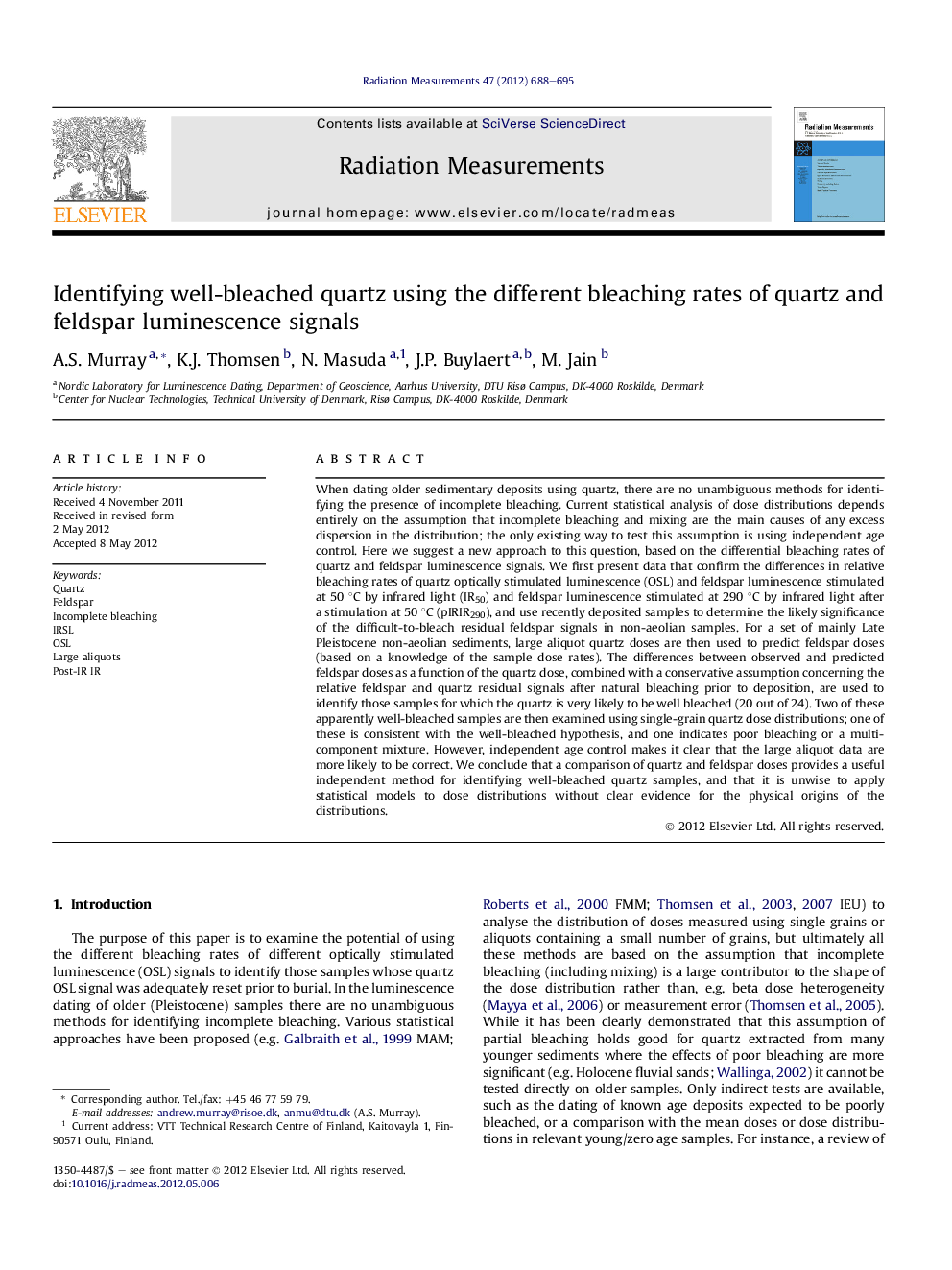| Article ID | Journal | Published Year | Pages | File Type |
|---|---|---|---|---|
| 1888465 | Radiation Measurements | 2012 | 8 Pages |
When dating older sedimentary deposits using quartz, there are no unambiguous methods for identifying the presence of incomplete bleaching. Current statistical analysis of dose distributions depends entirely on the assumption that incomplete bleaching and mixing are the main causes of any excess dispersion in the distribution; the only existing way to test this assumption is using independent age control. Here we suggest a new approach to this question, based on the differential bleaching rates of quartz and feldspar luminescence signals. We first present data that confirm the differences in relative bleaching rates of quartz optically stimulated luminescence (OSL) and feldspar luminescence stimulated at 50 °C by infrared light (IR50) and feldspar luminescence stimulated at 290 °C by infrared light after a stimulation at 50 °C (pIRIR290), and use recently deposited samples to determine the likely significance of the difficult-to-bleach residual feldspar signals in non-aeolian samples. For a set of mainly Late Pleistocene non-aeolian sediments, large aliquot quartz doses are then used to predict feldspar doses (based on a knowledge of the sample dose rates). The differences between observed and predicted feldspar doses as a function of the quartz dose, combined with a conservative assumption concerning the relative feldspar and quartz residual signals after natural bleaching prior to deposition, are used to identify those samples for which the quartz is very likely to be well bleached (20 out of 24). Two of these apparently well-bleached samples are then examined using single-grain quartz dose distributions; one of these is consistent with the well-bleached hypothesis, and one indicates poor bleaching or a multi-component mixture. However, independent age control makes it clear that the large aliquot data are more likely to be correct. We conclude that a comparison of quartz and feldspar doses provides a useful independent method for identifying well-bleached quartz samples, and that it is unwise to apply statistical models to dose distributions without clear evidence for the physical origins of the distributions.
